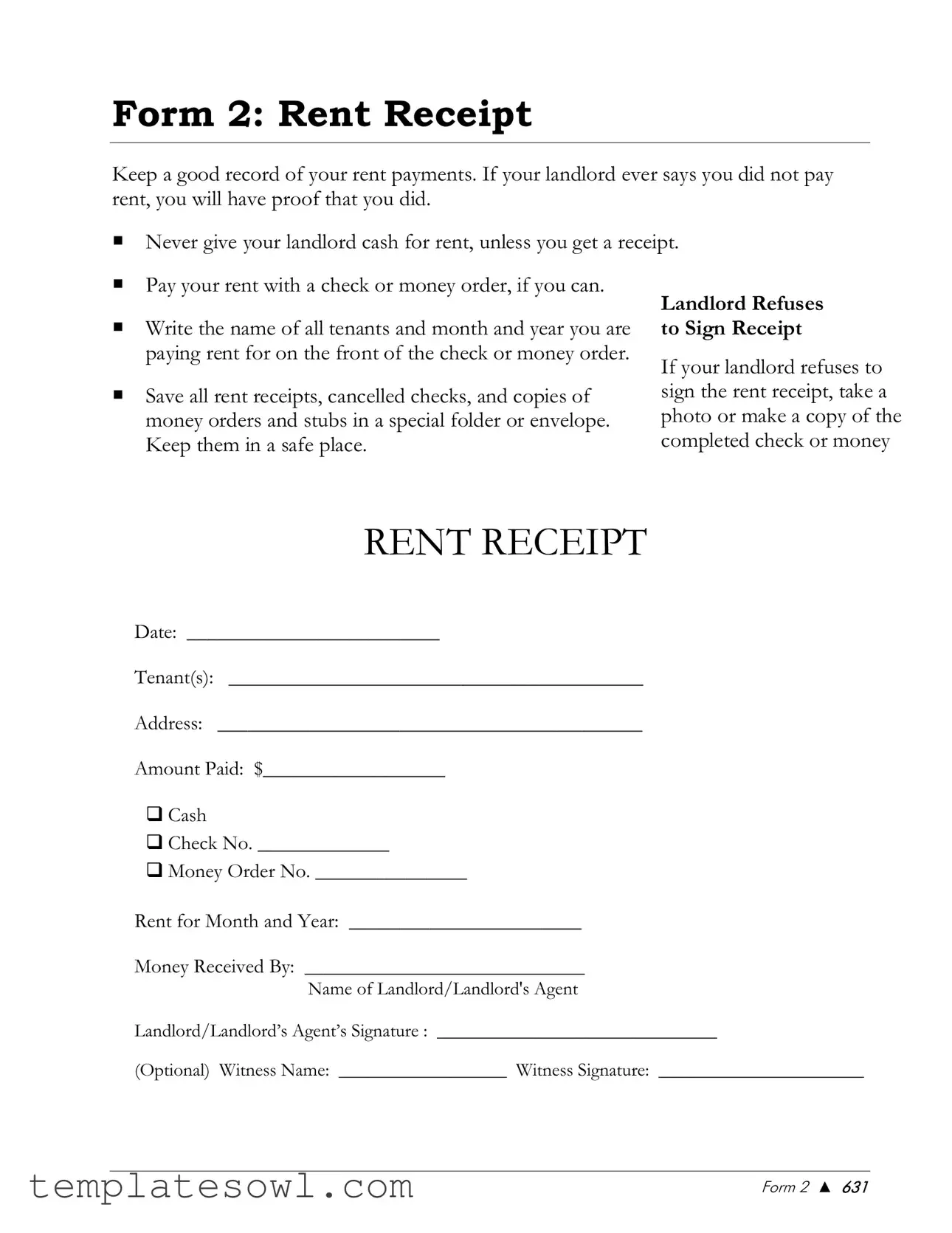Fill Out Your Rental Receipt Form
A Rental Receipt form serves as official documentation for the payment received by a landlord from a tenant. This simple yet crucial document includes essential details such as the date of payment, tenant information, and the amount paid, ensuring both parties have a record of the transaction. To make the process smoother, fill out the form by clicking the button below.
Launch Rental Receipt Editor Now
